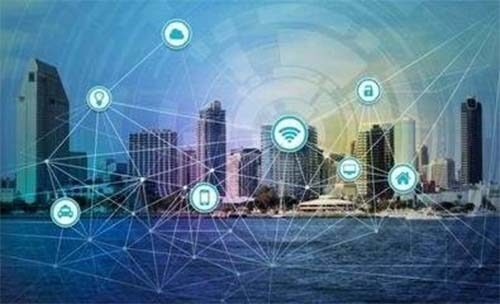What is a complete Internet of Things system look like?
A complete IoT system integrates four distinct components: sensors/devices, connectivity, data processing, and a user interface.

Internet of Things System
The emergence of the Internet of Things (IoT) system is called the third information revolution.
Internet of Things/IoT system passes through the information devices such as radiofrequency automatic recognition, infrared sensor, global positioning system, laser scanner, and image perceptual devices, to connect various items and the internet, information exchange, information exchange, and communication, to achieve intelligence elaborating, positioning, tracking, monitoring, and management.
In fact, the IoT system is also a microcomputer control system, but it is even bigger.
IoT system features
The Internet of Things/IoT system applies a new generation of IT technology to all walks of life. In, then “Internet of Things” is connected to the existing Internet, realizing the integration of human society and physical systems.
In this integrated network, there is a super-powerful central computer group, able to integrate people, machines, equipment, and infrastructure implement real-time management and control, based on this, human beings can manage production and life in a more fine and dynamic manner, achieve intelligence, improve resource utilization and productivity level, improve people and natural relationships.
Internet of Things (IoT) is a new technology, the key to getting real business value is the effective interaction between all elements in the architecture so that the application can be deployed faster, and process and analyze data at speeds of lightning. Thus make a wise decision as soon as possible.
First, the IoT System consists of
IoT system architecture can consist of four parts: Things, Gateway, Network infrastructure, Cloud infrastructure.
- Things (Equipment): These are defined as uniquely identifiable nodes, mainly sensors, which communicate through the network without manual intervention.
- Gateway: They act as an intermediary between things and clouds to provide the required network connection, security, and manageability.
- Network infrastructure: It consists of a router, aggregator, gateway, repeater, and other control data streams.
- Cloud infrastructure: Cloud infrastructure contains large virtualization servers and storage pools.
Second, the IoT system trends
Next-generation trends, ie social networks, big data, cloud computing, and mobility have made many things possible. In addition, global trends and incidents are promoting and promoting today’s technological advancement and model innovation, including:
Key vertical market efficiency and cost reduction initiatives
Government investment incentives for this new technology
Reducing the manufacturing cost of smart equipment
Reduce network connection costs
More efficient wired and wireless communication
Extension and reasonable mobile network
The Internet of Things is creating new opportunities for companies in the current and emerging markets and provides a competitive advantage. It touches everything, not just data, and how to, when, where, and why collect data.
The technology of creating the Internet of Things not only changes the Internet but also changes the equipment and gateways of what to connect to the Internet – network edges, they can now request a service or start operation without performing the human intervention.
Because the generation and analysis of the data are critical to the Internet of Things, it must be effectively protected throughout the life cycle of the data. Managing this level of data is very complex because the data will span many management boundaries with different policies and intentions.
Taking into account various technical and physical components constituting the Internet of Things ecosystems, it is completely reasonable to treat the Internet of Things as a system.
Building an IoT system that has commercial value for companies, is often a complex task because the enterprise architect is committed to designing integrated solutions, including edge devices, applications, transfer, protocols, and analysis functions, which make up a fully functional IoT system.
Third, the IoT system platform
In the next four years, safety solution spending for protecting the IoT systems will increase by five times.
The best IoT platform for the Internet of Things development solution requires unprecedented collaboration, coordination, and connection of each part of the IoT system and the entire IoT system.
All devices must work together and be integrated with all other devices, while all devices must seamlessly communicate and interact with the connected systems and infrastructure.
The best IoT system platform can:
Get and manage data to create standards-based on standard, scalable and secure platforms.
Integrate and protect data to reduce costs and complexity while protecting your investment.
Analyze the data and extract commercial value from the data and take action.
C&T RF Antennas Inc provides the IoT antenna design and production for the IoT system, contact us for more antenna details.
Besides the What is a Complete IoT System article, you may also be interested in the below articles.
4G vs 5G: What is the difference between 4G and 5G?
How to Choose the Best Antenna for Lora?
